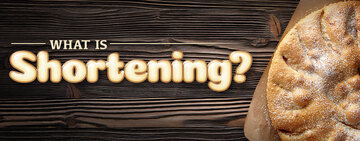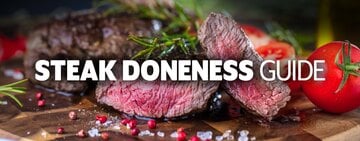What Is Compound Butter?
Compound butter, or finishing butter, is a type of butter that is mixed with herbs, spice blends, and other ingredients that give it a savory or sweet flavor. The term compound butter encompasses countless recipes and flavor profiles. From garnishing steak with a dollop of savory garlic herbed compound butter to spreading sweet maple compound butter on muffins, the only limit is your chef’s imagination.
How to Make Compound Butter

Compound butter adds complexity to your dishes, but making compound butter is simple. Compound butter is usually served in chilled rounds but can also be whipped and served as a spread. The easiest way to make compound butter is to cream your ingredients together atop parchment or wax paper. This method allows you to roll your compound butter into a sausage shape. Once shaped, chill your compound butter. Remove your compound butter from the fridge and slice to serve.
What Special Equipment Do I Need?
- Parchment or Wax Paper - This is what you will shape and roll the compound butter in.
- Pastry Scraper - You will squeeze out the air bubbles during the rolling process with a pastry scraper.
- Stand Mixer + Paddle Attachment - Use a stand mixer with a paddle attachment to make quick work of mixing the butter with your flavoring ingredients. While a stand mixer isn't necessary to make compound butter, it will help reduce prep time and labor costs and ensure a consistent mix.
- Butter Knife - Cut and serve the compound butter with a butter knife for a professional look.
Compound Butter Recipe
Compound butter might look fancy, but it is easy to make with only a few simple ingredients. You will want to use unsalted butter to control the amount of salt used in your recipe. The variations of herbs and spices used to create compound butter are endless: go with a classic herbed compound butter that includes fresh chopped rosemary thyme, parsley, and oregano, or a zesty jalapeno lime compound butter. This compound butter recipe goes over the ingredients needed and the directions to create any seasoned butter you like.
Yield: 16 servings (1 serving = 2 Tablespoons)
Compound Butter Ingredients:
- 1 pound of unsalted, softened butter
- Herbs and spices of your choice
- Salt
Directions:
- Soften butter to 60-68 degrees Fahrenheit.
- Chop, crumble, roast, and mix flavorings as needed.
- Add softened butter to stand mixer.
- Use paddle attachment to turn butter at medium speed.
- Once butter is fluffy, turn mixer to low speed.
- Add flavoring ingredients to mixer.
- Mix ingredients together completely.
- Stop the mixer once the ingredients are mixed and scrape compound butter mixture from blender onto sheet of parchment paper.
- Roll compound butter in the parchment paper into sausage-shaped log.
- Use hands to shape it until it is even.
- Press pastry scraper down onto parchment paper and squeeze air bubbles out.
- Evenly distribute compound butter down the length of parchment paper.
- Chill compound butter parchment paper roll until firm.
- Once firm, unroll compound butter from parchment paper.
- Set compound butter out at room temperature for a few minutes to soften it.
- Cut compound butter into slices and serve.

Back to Top
What Is Compound Butter Used For?
Compound butter is used as a flavor enhancer for meats, vegetables, and baked goods. Discover the top compound butter recipe ideas for steak, turkey, corn, fish, chicken, and bread below.
Compound Butter for Steak
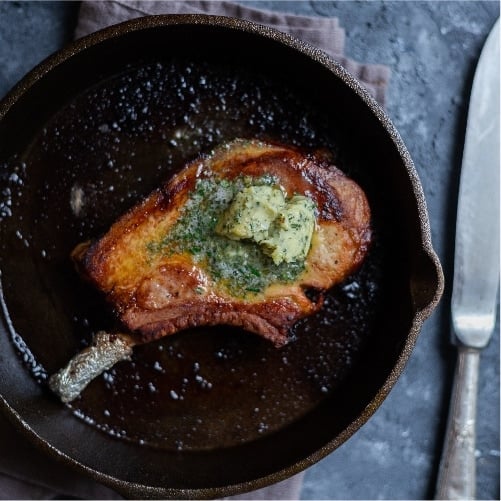
Most steakhouses add a dollop of butter to their pan as a meat moistener before removing and resting steak, but some take this indulgence one step further by creating a custom compound butter for their steak.
Chefs often make herb butter for steak, but this is just the beginning of your steak butter recipe options. Discover some of the best compound butter varieties for steak below.
- Maitre d’ butter
- Blue cheese compound butter
- Horseradish compound butter
- Garlic herb compound butter
Compound Butter for Turkey

Thanks to its mild flavor profile, turkey is an excellent compound butter candidate. If you’re serving dark meat turkey, a smoky compound butter recipe is an excellent choice. Topping light meat turkey with a compound butter that blurs the lines of sweet and savory will delight guests. Discover the best types of compound butter for turkey below.
- Garlic-chive compound butter
- Whole-grain mustard compound butter
- Cranberry orange zest compound butter
- Smoked garlic, thyme, and parmesan compound butter
Compound Butter for Chicken
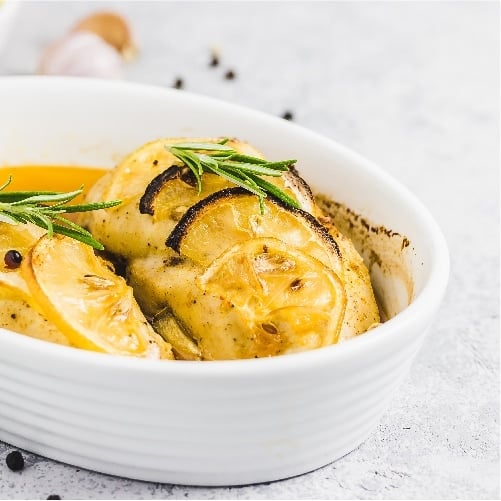
Use compound butter to transform your chicken dish from a boring basic to a delicious delicacy. Because chicken meat has a subtle flavor, you can pair it with either savory or sweet compound butter. Discover some inventive compound butter with exotic spices for various chicken dishes below.
- Berbere, garlic, caramelized onion compound butter
- Kimichi and togarashi compound butter
- Orange-marmalade and ginger compound butter
- Basil, pesto, and sundried tomato compound butter
Compound Butter for Salmon
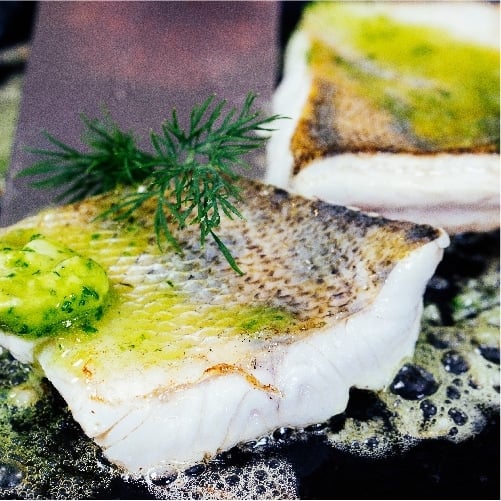
Making compound butter for salmon and other fish dishes will set your seafood above your competition. Chefs commonly prepare salmon fillets, shrimp, and mussels with lemon and butter. While this classic combo is comforting, it's also cliche. Cream these unexpected seasonings and international flavors in your butter for an unparalleled seafood dish.
- Cilantro, jalapeno, and lime juice compound butter
- Charred scallion compound butter
- Harissa mint compound butter
- Miso compound butter
Compound Butter for Corn

Nothing says summer like fresh corn on the cob slathered in butter. Upgrade this summer staple by using compound butter. From South American flavors to state fair classics, discover the top kinds of compound butter for your corn recipe below.
- Garlic parmesan compound butter
- Brown sugar compound butter
- Cilantro Cotija compound butter
- Tajin compound butter
Compound Butter for Bread
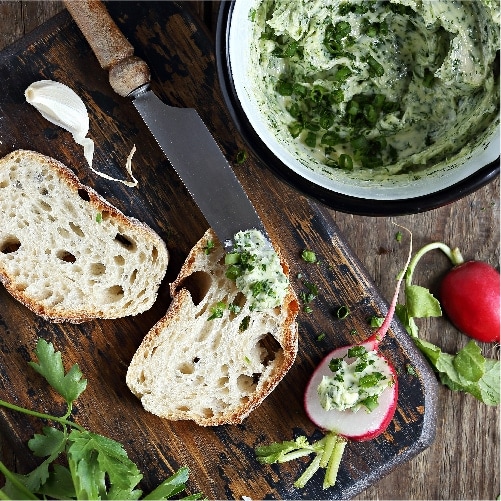
In the world of food, there are pairings so iconic it’s hard to imagine serving one without the other: pancakes and syrup, cake and frosting, and, of course, bread and butter. While patrons would balk if you served them a breadbasket without butter, you could earn their loyalty and returned patronage by crafting a specialty compound butter.
If you’re serving sweet scones or croissants at your continental breakfast, your guests will delight in a sweet compound butter. Herb butter for butter boards or bread baskets filled with sourdough loaves is an excellent choice. We’ve outlined some scrumptious ideas for bread compound butter combinations.
- Honey butter
- Brandy vanilla compound butter
- Herb butter
- Cinnamon pecan compound butter
What Is Maitre D’Butter?
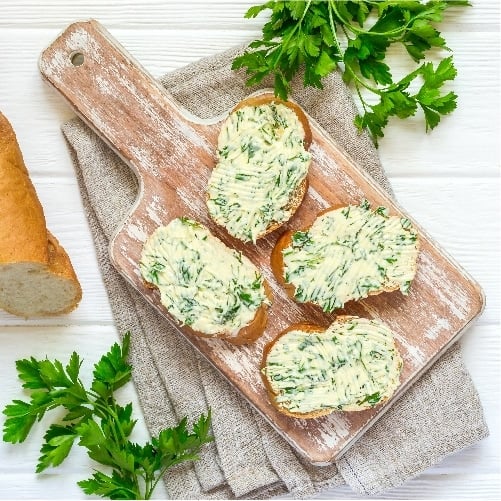
If you've been to a French restaurant, you may have left wondering what maitre d'butter is. Maitre d’ butter, or Maitre d’hotel butter, is a compound butter that originated in France. English speakers may assume it was a popular butter in hotels, but this is not the case. The French deemed it Beurre Maitre d’Hotel because a restaurant’s Maitre d’Hotel (head waiter) made it tableside, a common practice in French table service.
Beurre Maitre d’Hotel is usually formed into a cylinder, chilled, and then sliced into disks for serving atop meats such as steak and fish. Your chef can also use it as a condiment for eggs, potatoes, bread, and vegetables.
Ingredients for a Traditional Maitre D'Hotel Butter:
- Softened unsalted butter
- Lemon juice
- Finely minced parsley
- Salt
- Fresh ground black pepper
Some chefs add the following ingredients to their Maitre d’Hotel butter recipe:
- Paprika
- Cayenne pepper
- Shallots
- Dijon mustard
- Worcestershire sauce
Compound Butter FAQ

Because compound butter encompasses such a wide variety of flavor combinations and potential flavorings ingredients, questions often arise when preparing a compound butter recipe. We’ve answered the most common compound butter making, using, and storing questions below.
How Long Does Compound Butter Last?
Compound butter stays good for a week in your refrigerator and for a month in your freezer.
What Is Compound Butter Made Of?
The foundational compound butter ingredient is unsalted, softened butter. Using unsalted butter keeps your salt levels from becoming overwhelming when you add your other ingredients. Although butter is the defining factor, you can create a plant-based compound butter by using plant butter or margarine.
By definition, ‘compound’ is a descriptive word used to describe items composed of two or more parts, elements, or ingredients. So, compound butter is butter combined with at least one additional ingredient. However, most compound butter recipes will include several ingredients. Depending on the ingredients you add, you can make your compound sweet or savory.
Can Dried Herbs Be Used for Compound Butter?
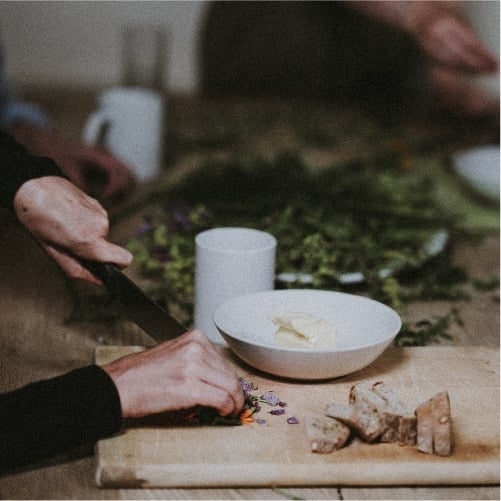
The storage life of fresh herbs is brief, causing many to wonder whether they can use dried herbs in their compound butter. The quick answer is yes, you can use either dried or fresh herbs in a compound butter recipe.
As with any recipe, choosing dried vs fresh herbs requires you to adjust your ratios. As a guideline, use 1 to 1 1/2 teaspoons of crumbled dried herbs for every 1/2 cup (cube) of butter. In contrast, you’ll want to use a full tablespoon of finely chopped fresh herbs per butter cube.
Bear your herbs’ strength in mind when forming your ratios. For example, you may need to reduce the amount of dried sage and increase the amount of basil to achieve a rich but not overpowering herb flavor. If you’re working with ground seeds such as dill or fennel, you’ll only want to use a 1/2 teaspoon per 1/2 cup of butter.
Can You Bake with Compound Butter?

Compound butter will add rich flavors to baked goods. Confectioners commonly use compound butter varieties to make glazes, fillings, and frostings. Undoubtedly, compound butter is more difficult to measure than sticks of butter. Since baking is a precise art, you’ll want to use a recipe conversion calculator when incorporating compound butter into your bakery’s recipes.
However, if you’re watchful, you can truly elevate your baked goods by using compound butter. Just imagine it; snickerdoodles laced with a limoncello and lemon zest compound butter. The options are as endless as they are decadent.
Back to Top
Attention to detail and a mastery of seasoning elevate meals to dining experiences. You can create memorable dishes customers rave about and return to with compound butter. Reference our compound butter ratio recipe as you experiment with different ingredients, and use our compound butter pairing suggestions to kick-start your imagination.

